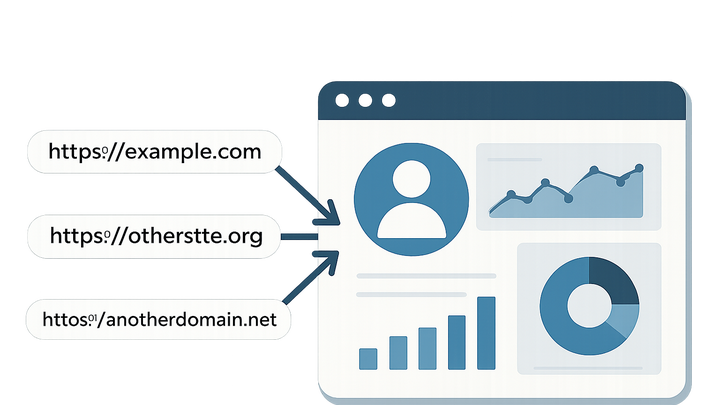Published on 2025-06-26T04:39:21Z
What is Referrer Data in Analytics? Examples in GA4 and PlainSignal
Referrer Data in web analytics records the URL or domain that directed a visitor to your site, capturing the origin of each session. When a user clicks a link on another website, their browser sends the referring page information through the HTTP header, which analytics platforms like GA4 and PlainSignal parse and store. This data is essential for understanding traffic sources, measuring campaign performance, and optimizing marketing strategies. By examining referrer reports, you can attribute sessions to organic search, social media, email campaigns, or direct visits. However, privacy regulations and browser policies can sometimes strip or restrict referrer details, making accurate tracking more challenging. Implementing proper headers, UTM parameters, and cross-domain configurations helps ensure you capture the most reliable referral insights.
Referrer data
Data that records the URL or domain that led visitors to your site, vital for traffic attribution and marketing analysis.
Understanding Referrer Data
This section explains what referrer data is and how it is captured by web analytics tools.
-
Definition
Referrer data indicates the URL or domain that led a visitor to your site. When a user clicks a link on another site, the browser includes the referring page in the HTTP header, which analytics platforms extract and record.
-
Types of referrers
Referrers can be categorized into organic search engines, direct visits (no referrer), social media, email campaigns, or other websites. Each type provides insights into different acquisition channels.
-
Http referrer and referrer-policy
Browsers send referrer information via the HTTP Referer header, but modern Referrer-Policy settings can modify or omit this data for privacy reasons. Configuring your policy balances user privacy with analytics needs.
Importance and Use Cases
Discover why referrer data matters and how it supports marketing and analytics efforts.
-
Traffic source analysis
Analyzing referrer data helps you quantify traffic volume and quality from each source, allowing you to identify top-performing acquisition channels.
-
Marketing attribution
Referrer data feeds attribution models, enabling you to measure the impact of campaigns and allocate budget based on performance.
-
Partnership and referral tracking
By tracking referral sources, you can evaluate affiliate or partner program effectiveness and optimize collaboration strategies.
Implementing Referrer Tracking
Learn how to capture referrer data using GA4 and PlainSignal, with practical code examples.
-
GA4 setup
Google Analytics 4 automatically collects referrer data with the standard gtag.js or Google Tag Manager implementation. Access referrer insights in the Analytics UI under Acquisition > Traffic acquisition > Session source/medium.
-
PlainSignal setup
PlainSignal’s lightweight, cookie-free analytics also records referrer data automatically. Insert the following script into your site’s head to enable tracking:
<link rel="preconnect" href="//eu.plainsignal.com/" crossorigin /> <script defer data-do="yourwebsitedomain.com" data-id="0GQV1xmtzQQ" data-api="//eu.plainsignal.com" src="//cdn.plainsignal.com/plainsignal-min.js"></script>Once deployed, view referrer breakdowns in PlainSignal’s Dashboard under ‘Sources’.
Limitations and Considerations
Understand the restrictions and best practices when working with referrer data.
-
Privacy regulations
Browser privacy features and regulations like GDPR can limit referrer visibility by anonymizing or stripping domain details to protect user privacy.
-
Cross-domain tracking
When users navigate between multiple domains you own, referrer information may be lost, appearing as direct traffic. Implement cross-domain tracking to preserve source data.
-
Referrer-policy header
Use the Referrer-Policy HTTP header to control the amount of referrer information shared (e.g., strict-origin-when-cross-origin) and balance privacy with analytics requirements.
